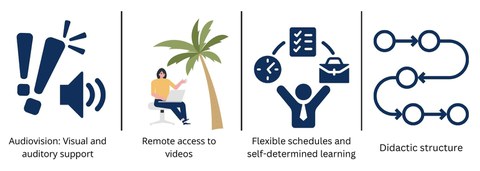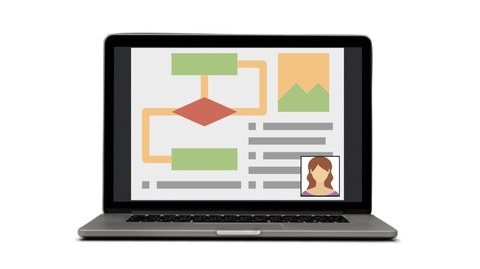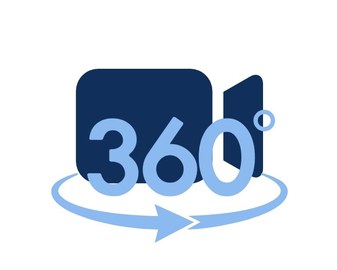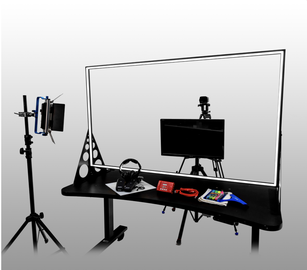Production of teaching/learning videos
Teaching/learning videos are a valuable tool in modern education. They enable educators to convey complex content in a clear and understandable way and offer learners the flexibility to acquire knowledge at their own pace.
On this page you will find comprehensive information on the creation and use of teaching/learning videos. We provide you with a background in learning theory, present different types of teaching/learning videos and show you the many ways in which they can be used in teaching. We will also give you valuable didactic tips and practical advice to help you effectively create your teaching videos.
Whether you already have experience creating educational videos or are just starting out, our resources and recommendations will help you produce high-quality and engaging learning content.
Table of contents
- 1. Theoretical background on learning
- 2. Characteristics of teaching/learning videos
- 3. Different types of teaching/learning videos
- 4. Potential applications in teaching
- 5. Didactic integration of teaching/learning videos
- 6. Guidelines and principles
- 7. Design recommendations
- 8. Practical tips
- 9. Offers from ZILL
1. Theoretical background on learning
The use of teaching/learning videos in education is based on various learning theories that influence the way in which knowledge is imparted and acquired. The most important learning theories include constructivism, cognitive psychology and behaviourist learning theory.
If you would like to find out more about learning theories, you can download this PDF:
1. Theoretical Background on Learning
2. Characteristics of teaching/learning videos
Teaching/learning videos are an effective and popular medium in the modern educational landscape. They offer numerous advantages that support the learning process and make it easier to understand complex content. At this point, the main characteristics of teaching/learning videos will be named and briefly explained.

Characteristics of teaching/learning videos
In a nutshell: Teaching/learning videos are characterized by the use of audiovisual elements which convey complex content in an appealing way and improve the overall understanding. They are usually available online, which enables mobile and flexible learning. This also means that learners can access, pause or rewind the videos to learn at their own pace. In addition, well-designed videos follow a clear didactic structure and often contain interactive elements to deepen understanding.
If you would like to find out more about the characteristics of teaching/learning videos, you can do so here:
2. Characteristics of teaching/learning videos
3. Different types of teaching/learning videos
Choosing the right type of video depends on the specific learning objectives, the content and the needs of the learners. Through the targeted use of different types of video, teachers can support the learning process and increase the effectiveness of their teaching.
Teaching/learning videos can be roughly divided into two main categories: Explanatory videos and demonstrational videos. Both types have their specific sub-forms, which can be used depending on the learning objective and content.
Explanatory videos are designed to explain concepts, theories or procedures in an easily understandable way. They can use different approaches and techniques to convey complex content clearly.
Explanatory videos can be divided into further sub-forms. These include both "electronic lectures" and "live digitalized lectures".
"Electronic lectures:
- Screencasts
- slidecasts
- Video podcasts
- Interactive videos
- Studio productions
"Live Digitized Lectures":
- Lecture recordings
- Interviews and expert lectures
Demonstration videos show how certain tasks or actions are carried out. They are particularly helpful for teaching practical skills or applications.
These include, for example, video-based case studies.
The distinction between explanatory videos and demonstration videos is important because they pursue different pedagogical goals and approaches, each addressing specific learning needs.
Explanatory videos are designed to make theoretical concepts, principles and abstract ideas understandable. They are ideal for conveying knowledge that is mainly acquired through cognitive understanding and thinking.
Demonstration videos, on the other hand, show practical applications, skills and actions. They are particularly useful for conveying knowledge that is acquired through action and observation.
If you know your learning/teaching objective, you can use this distinction to make the creation of the video easier and more targeted.
You can find out more about the different formats of teaching/learning videos here:
3. Different types of teaching/learning videos
4. Potential applications in teaching
Teaching/learning videos can be used in a variety of ways in university teaching and help to enrich and individualize the learning process. The continuous integration of teaching/learning videos into university teaching supports the development of key skills and optimally prepares students for the requirements of their degree program.
Some of the most important areas of application are described below:
4. Potential applications in teaching
5. Didactic integration of teaching/learning videos
The didactic embedding of teaching/learning videos is crucial to their success in the educational process. A well thought-out integration of these videos into lessons ensures that they are not used in isolation, but as an integral part of a comprehensive teaching concept.
You can find out more about this topic here:
5. Didactic integration of teaching/learning videos
6. Guidelines and principles
The principles and guidelines for the design of teaching/learning videos are based on scientifically proven findings from the field of learning psychology. In the previous section (5. Didactic embedding of teaching/learning videos), we have already looked at some didactic concepts.
The principles presented here should help you to deliver the learning content more effectively by supporting the cognitive processes of the learners. The principles include combining visual and auditory elements, focussing on relevant information and avoiding superfluous details. They promote a clear and consistent design of the videos in order to facilitate learning and deepen understanding.
The individual principles are named and explained in the following PDF:
7. Design recommendations
A well-designed teaching/learning video contributes significantly to motivating learners and supporting the learning process. The following section presents general design recommendations as well as specific techniques and tools that are helpful when creating teaching/learning videos.
As briefly mentioned in the picture gallery, the lightboard is a transparent sheet of glass that is positioned between the person speaking and the camera. You can write, develop formulas and create drawings on it during the presentation. The Lightboard's intelligent software rotates this content so that the writing can be read normally from the camera's perspective. Additional content such as text, illustrations, photos and films can be added to the board at a later stage so that they merge with the existing material.
The Lightboard is part of the experimental laboratory of the Teaching Synergies Program at TU Dresden.
Lightboard videos are particularly suitable for teaching contexts in which the step-by-step development of concepts and contexts is important for understanding and these are to be represented with a blackboard image.
The experimental laboratory is a workshop in which (young) scientists and educators at TU Dresden, together with interested parties and alumni, can receive advice and support in the creation of learning materials. As a physical space, it invites you to experiment and try things out in order to gain (further) qualifications in media didactics and to design various approaches to research-oriented teaching in a didactically valuable and student-orientated way.
The following link will take you to the website of the experimental laboratory, where you will find the contact information to start your journey with the Lightboard:
TU Dresden Experimental Lab Website
You can also attend our OPAL course, which is designed to help you prepare for working with the Lightboard. (Currently only available in German. You may use DEEPL Translate to read the website regardless.)
OPAL course: More than just a video - discover the Lightboard for your own teaching
If you would like to find out more about the design of teaching/learning videos, you can download the following PDF:
8. Practical tips
The creation of teaching/learning videos requires not only didactic considerations, but also practical planning and technical knowledge. Below you will find some practical tips to help you with the production of your educational videos:
9. Offers from ZILL
If you have any further questions on the subject of teaching/learning videos, please do not hesitate to contact us:
 © Nicole Gierig
© Nicole Gierig




